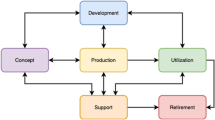Abstract
This work is concerned with modelling, analysis and implementation of embedded control systems using RT-DEVS, i.e. a specialization of classic discrete event system specification (DEVS) for real-time. RT-DEVS favours model continuity, i.e. the possibility of using the same model for property analysis (by simulation or model checking) and for real time execution. Special case tools are reported in the literature for RT-DEVS model analysis and design. In this work, temporal analysis of a model exploits a translation in Uppaal timed automata for exhaustive verification. For large models a simulator was realized in Java which directly stems from RT-DEVS operational semantics. The same concerns are at the basis of a real-time executive. The paper describes the proposed RT-DEVS development methodology and clarifies its implementation status. The approach is demonstrated by applying it to an embedded system example which is analyzed through model checking and implemented in Java. Finally, research directions which deserve further work are indicated.
Similar content being viewed by others
References
Agha G (1986) Actors: a model for concurrent computation in distributed systems. The MIT Press, Cambridge
Alur R, Courcoubetis C, Dill DL (1993) Model checking in dense real-time. Inf. Comput. 104(1): 2–34
Alur R, Dill DL (1994) A theory of timed automata. Theor. Comput. Sci. 126(2): 183–235
Behrmann G, David A, Larsen KG (2004) A tutorial on Uppaal. In: Bernardo M, Corradini F (eds) Formal methods for the design of real-time systems, LNCS, vol 3185. Springer, Heidelberg, pp 200–236
Cho Y, Hu X, Zeigler B (2003) The RTDEVS/CORBA environment for simulation-based design of distributed real-time systems. Simulation 79(4): 197–210
Cicirelli F, Furfaro A, Nigro L (2006) A DEVS M&S framework based on Java and actors. In: Proceedings of second European modeling and simulation symposium (EMSS’06). Barcelona, Spain
Cicirelli F, Furfaro A, Nigro L (2007) Conflict management in PDEVS: An experience in modelling and simulation of time Petri nets. In: Proceedings of summer computer simulation conference (SCSC’07), pp 349–356
Cicirelli F, Furfaro A, Nigro L (2007) Using TPN/Designer and Uppaal for modular modelling and analysis of time-critical systems. Int. J. Simul. Syst. Sci. Technol. 8(4): 8–20
Cicirelli F, Furfaro A, Nigro L (2008) Actor-based simulation of PDEVS systems over HLA. In: Proceedings of 41st annual simulation symposium (ANSS’08), pp 229–236
Cicirelli F, Furfaro A, Nigro L (2008) An agent infrastructure over HLA for distributed simulation of reconfigurable systems and its application to UAV coordination. Simulation: transactions of the society for modeling and simulation international. doi:10.1177/0037549708100187
Defense Modeling and Simulation Office: HLA-RTI. http://www.dmso.mil/public/transition/hla
Furfaro A, Nigro L (2007) Modelling and schedulability analysis of real-time sequence patterns using time Petri nets and Uppaal. In: Proceedings of international workshop on real time software (RTS’07), pp 821–835
Furfaro A, Nigro L, Pupo F (2006) Modular design of real-time systems using Hierarchical Communicating Real-time State Machines. Real Time Syst 32(1/2): 105–123
Halang WA (1992) Load adaptive dynamic scheduling of tasks with hard deadlines useful for industrial applications. Computing 47: 199–213
Hong J, Song H, Kim T, Park K (1997) A real-time discrete-event system specification formalism for seamless real-time software development. Discrete Event Syst Theory Appl 7: 355–375
Hu X, Zeigler B (2004) Model continuity to support software development for distributed robotic systems: A team formation example. J Intell Robot Syst 39(1): 71–87
Hu X, Zeigler B (2005) Model continuity in the design of dynamic distributed real-time systems. IEEE Trans Syst Man Cybern A Syst Hum 35(6): 867–878
Hu X, Zeigler B, Mittal S (2005) Variable structure in devs component-based modelling and simulation. Simulation 81(2): 91–102
Object Management Group: RealTime-CORBA Specification. http://www.omg.org/docs/formal/03-11-01.pdf
Posse E, Vangheluwe H (2007) Kiltera: a simulation language for timed, dynamic structure systems. In: Proceedings of 40th annual simulation symposium (ANSS’07), pp 293–300
Raju SCV, Shaw AC (1994) A prototyping environment for specifying and checking Communicating Real-time State Machines. Softw Pract Exp 24(2): 175–195
Ramadge RJ, Wonham WM (1987) Supervisory control of a class of discrete event processes. SIAM J Control Optim 25(1): 206–230
RTSJ. http://jcp.org/aboutJava/communityprocess/first/jsr001/rtj.pdf
Shang H, Wainer G (2008) Dynamic structure devs: improving the real-time embedded systems simulation and design. In: Proceedings of 41st annual simulation symposium (ANSS’08), pp 271–278
Song H, Kim T (2005) Application of real-time DEVS to analysis of safety-critical embedded control systems: railroad-crossing example. Simulation 81(2): 119–136
Uppaal. http://www.uppaal.com
Zeigler BP, Praehofer H, Kim T (2000) Theory of modeling and simulation, 2nd edn. Academic Press, New York
Author information
Authors and Affiliations
Corresponding author
Rights and permissions
About this article
Cite this article
Furfaro, A., Nigro, L. A development methodology for embedded systems based on RT-DEVS. Innovations Syst Softw Eng 5, 117–127 (2009). https://doi.org/10.1007/s11334-009-0085-4
Received:
Accepted:
Published:
Issue Date:
DOI: https://doi.org/10.1007/s11334-009-0085-4




